I ride a Harley-Davidson motorcycle, specifically a Road Glide full-dress touring bike. But why a Harley and not some other bike? The short answer is that I like the Road Glide and that’s why, but that is not a very satisfying answer. So maybe a bit more detail is in order, starting with a bit of my ‘motorized two wheel’ history..
Motorcycles I’ve ridden
I have wanted a motorcycle since I was about 8 years old. For various reasons it never really worked out for me, though. The first motorized two-wheeling I did was on a moped. I actually had two different mopeds between the age of about 12 and 16. At the time in Alberta where I lived such ‘motor assisted pedal bikes’ could be ridden without a license so long as they couldn’t go over 50 km/h.
The mopeds
The first moped I rode was a VeloSolex, which basically puts a motor on the front fork that drives the front wheel by friction. Not exactly a ‘cool’ bike, but it did the job of getting me around without having to peddle so hard.

Later I had a… actually, I don’t know what brand or model it was, but it had a motor driven chain so it was slightly more like a motorcycle. My recollection of this moped isn’t really clear, but I know I had it for a year or two. I think it might have been stolen from me, but that could be a false memory.
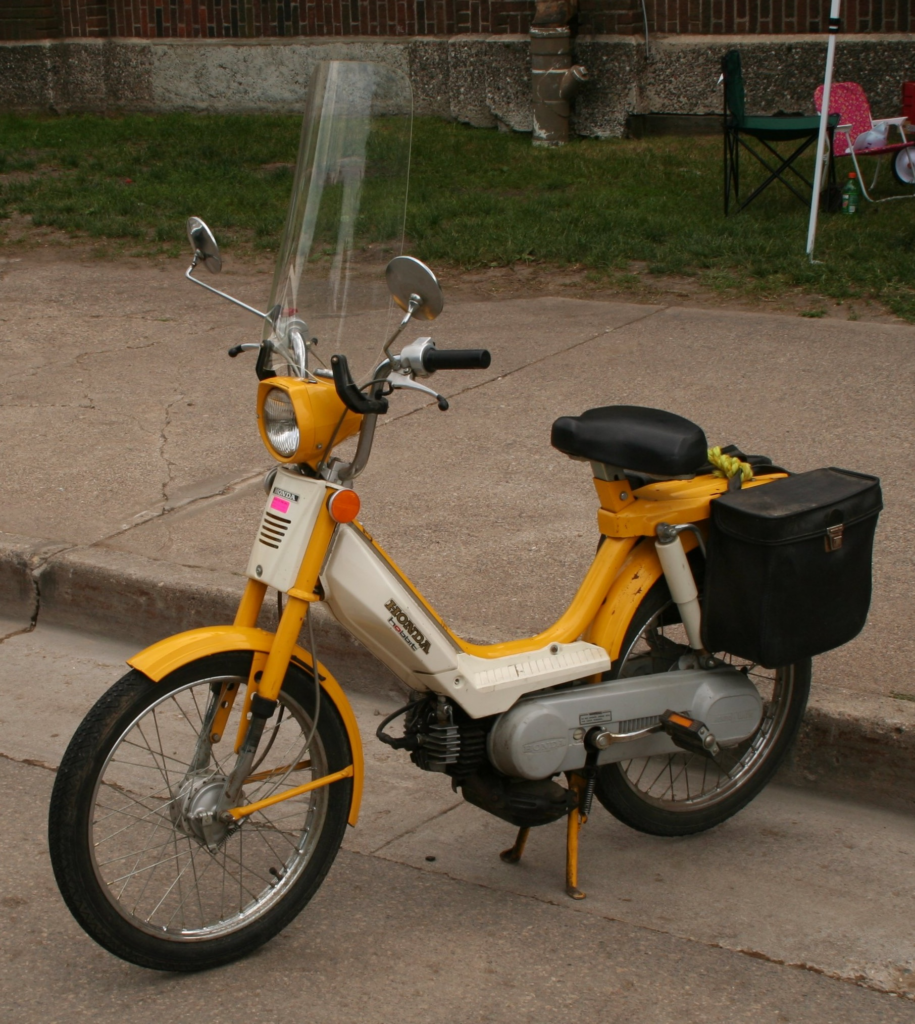
Graduating to a real motorbike
The first ‘real’ motorbike I had was a Kawasaki 250 cc that I got when I was about 18. This bike required a motorcycle license, and my plan was to get that license. I passed the written test with no trouble, but I had no idea how to prepare for the practical test. And I had no lessons for the test either, which basically started with riding between two rows of parallel cones with three inches on either side of the foot pegs of the bike. I completely blew it: the test administrator said I could clearly ride on the road, but it was also clear I hadn’t practiced the test requirements.

I continued to (illegally, under my learner’s permit) ride my Kawasaki for a year or so, and really enjoyed it. But I never worked up the courage to try the practical test again and sold the bike with about 2,500 km on the odometer.
Revisiting my motorcycle passion in my 40s
I decided to start riding again in 2010 at the ripe old age of 46. This time I didn’t buy a bike until I was properly started on a formal motorcycle skills training course. I completed all the skills training on the 250 cc bike the training company provided, but decided to buy my own bike. The licensing requirements are different in BC than they were in my youth in Alberta: passing the written test and a skills test administered by the trainer grants permission to ride without supervision with certain restrictions. So I could get my own bike, practice riding it outside of my formal training, and use it to complete my final skills test for permanent licensing.
The bike I bought was a Kawasaki Vulcan, and it was a pretty nice bike. Big enough for highway riding and even a bit of light touring, I had a lot of fun with it.

I road my Vulcan quite happily for a full season, and put about 10,000 km on it. But I started to feel like a full touring bike might be more suitable for the longer rides I was starting to enjoy. The Vulcan was fine for most riding, but at sustained highway speeds it became a bit less solid than I liked, and its windshield didn’t do much shielding. I decided to take a test ride on a Harley-Davidson.
The decisive test ride
I did a lot of research before I went for a test ride. My preference was for a touring bike with a frame-attached fairing, which at the time (fall of 2010) narrowed my Harley choices to the Road Glide. I also considered other touring bikes, specifically the Honda Gold Wing and the BMW 1600. My plan was to try the Harley Road Glide and, if it wasn’t a fit, move on to the others.
I took one test ride of the Road Glide and made my decision. The Harley-Davidson Road Glide was rock steady on the road at highway speeds, even in crosswinds. It shrugged off things like tar ‘road snakes’ (those crack patches in the road that cars ignore) that made my Vulcan skitter about like a frightened horse. The riding position was close to perfection, relaxed and mostly upright. And the sound… Harley’s produce their own kind of music. After negotiating with my wife Irene, I bought the Road Glide with my Vulcan as trade.
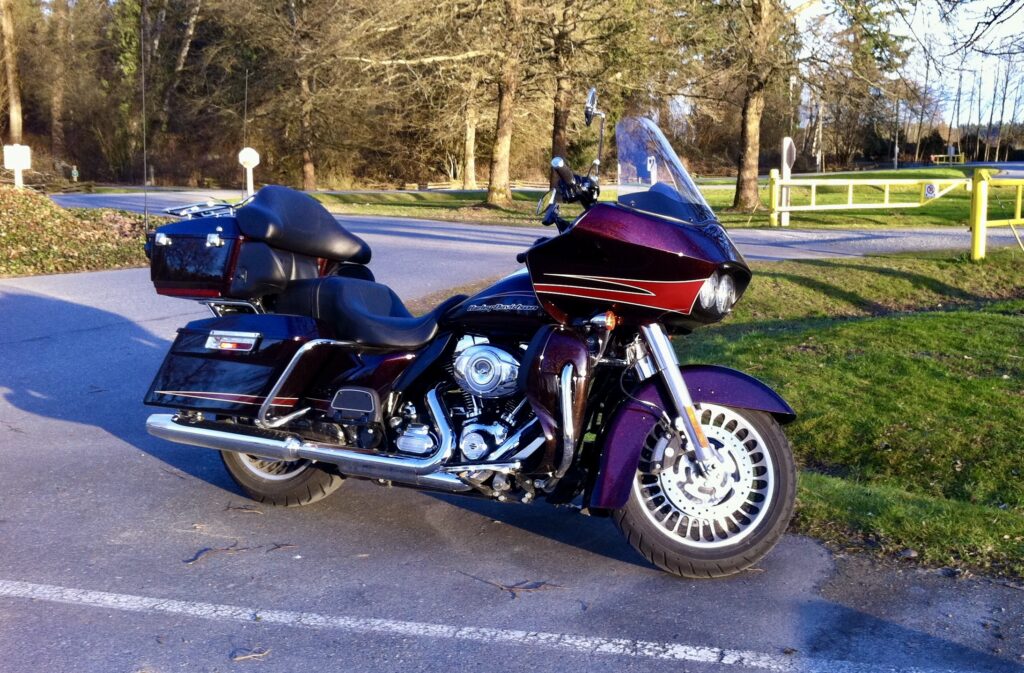
I’m not a Harley-Davidson ‘snob’: pretty much all motorcycles these days have their merits and different bikes will appeal to different riders for different reasons. I’m also not blind to the shortcomings of Harley-Davidson motorcycles. Harleys are not the most technically advanced bikes; they have less horsepower than most competitive bikes; they eschew liquid cooling; they vibrate at idle. But I still love my Harley-Davidson Road Glide after nearly 14 years and 140,000 km of riding.
Primary reasons I love my Harley Road Glide
Some of the reasons I love my Harley Road Glide will be reasons other people choose other bikes. That’s fantastic! Choosing a particular bike based on someone else’s preferences would be unwise, and your interests may certainly lead you to a different brand or model. But I do have my reasons:
- Exceptional customizability: Harleys have nearly infinite options for customization both from HD itself and from aftermarket suppliers. I can safely say that there is no bike out there that has as many different choices for everything from performance to visual customization. During my ownership I’ve upgraded the performance of my bike with significant engine changes; added comfort features like handlebars with greater pull-back and an air-ride seat; and replaced the headlights with high-performance LEDs. All of this was changed under warranty with dealer-supported parts.
- Highway stability: Harley touring bikes made since sometime around 2009 have very good road stability. The suspension and frame structure make the bikes very well planted on the highway, less subject to small groves and bumps than is common with other bikes. The Road Glide’s frame-attached fairing adds to this by shrugging off most cross winds
- Serviceability: Harleys are fairly easy to work on. Their lack of ‘cladding’ and various plastic bits all over the engine make getting at the working parts straight-forward compared to bikes like the Goldwing and BMW. But I am also including the availability of Harley dealers across North America as part of this. Unfortunately Harley has closed many of their smaller dealers in recent years which has made this less of a strength for the bike than it used to be
- Cool factor: This largely originates from the time and place where I grew up. As a kid, the coolest motorcycles were Harleys. People who knew nothing about motorcycles recognized the Harley-Davidson name. And Harleys still represent a kind of free-spirited, possibly even rebellious, attitude. That is something I appreciate even if it isn’t really a match for who I am
- That sound: The Harley-Davidson V-twin sound is iconic. The two cylinders have two pistons attached to a single pin and fire ‘unevenly’. There is a distinct beat-beat-pause in the firing order that makes the engine sound uniquely ‘raw’. It also leads to some vibration at idle, which disappears completely when riding. Modern Harley engine designs ‘tame’ this roughness with counterweights, but intentionally don’t eliminate it: some people love it that much.
I expect my next bike might be a trike due to my knees starting to fail, but it will almost certainly still be a Harley. I’m smitten.

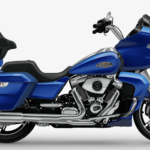
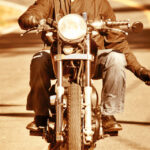

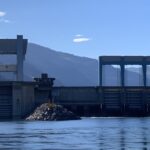
Leave a Reply